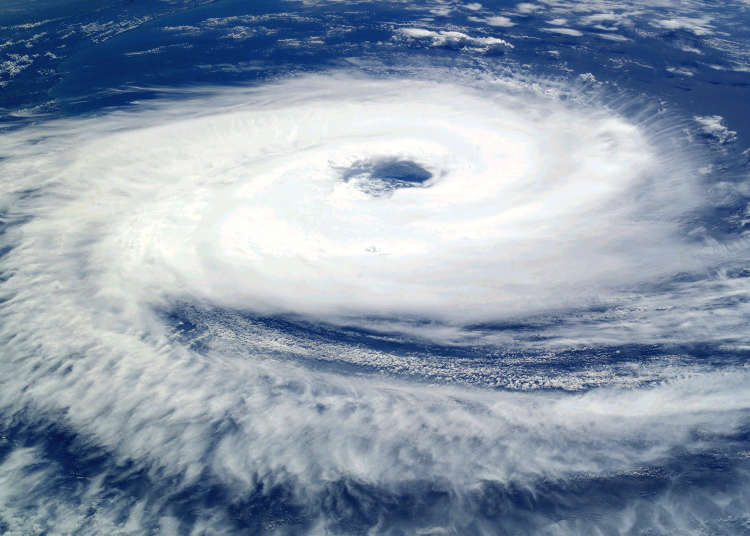
During your stay in Japan there may be times when things go wrong and you encounter an emergency situation. Whether it be a natural disaster or a medical emergency, it is good to be prepared for any situation that may arise.
Outline
This article introduces the following information and tips:
1. What to do in an emergency in Japan
2. Japan Emergency Phone Numbers
3. Common Natural Disasters in Japan
4. Useful Apps
5. Useful Websites
1. What to do in an emergency in Japan

Depending on the situation there are different numbers you can call to get the appropriate help you need.
If an emergency that requires an ambulance or fire services occurs, the emergency phone number you need to call is 119. In a situation that requires police assistance, call 110 for reporting accidents, theft, or other crimes.
When reporting to the police and you are not sure of your location, there are serial numbers on traffic signs, traffic signals, utility poles, and vending machines you can tell them to specify where you are. If you require police assistance or information during non-emergencies, you can call #9110 or 03-3501-0110.
Emergency shelters
In case a situation becomes dangerous for your safety, follow the directions by the local disaster-control authority and evacuate to an emergency shelter. Each community has designated emergency shelters; speak with your hotel staff to learn where these are located. Even if an evacuation advisory is not issued, be sure to check the weather news on TV/web frequently. If you feel a situation to be threatening, evacuate yourself to a designated emergency shelter.

In case of fire
If you see a fire, call out in a loud voice to inform neighbors about the fire (the word for fire is “kaji” - 火事) and call 119 with the location and/or nearby serial number.
For those needing help finding a medical facility, you can contact the Tokyo Fire Department Disaster and Emergency Information Center at 03-3212-2323 who will be able to direct you to the nearest hospital to you. English assistance is available to those who need it.
2. Japan Emergency Phone Numbers
・119: Medical Emergency and Fire Brigade, for ambulances or fire services
・110: Police, for reporting accidents, theft or other crimes
・118: Coast Guard
・0570-000-911: Japan Helpline (24 hour non-profit, nationwide emergency assistance service)
・03-3212-2323: Tokyo Fire Department Disaster and Emergency Information Center (English speaker available)
・#9110 or 03-3501-0110: Metropolitan Police Department General Counseling Center for non-emergencies
3. Common Natural Disasters in Japan

Being an island nation bordering the Ring of Fire, Japan is a country where different natural disasters take place. Among the common natural disasters are earthquakes, tsunamis, typhoons, flooding, landslides, and volcanic eruptions. Let us cover the basics and what to do under these circumstances.
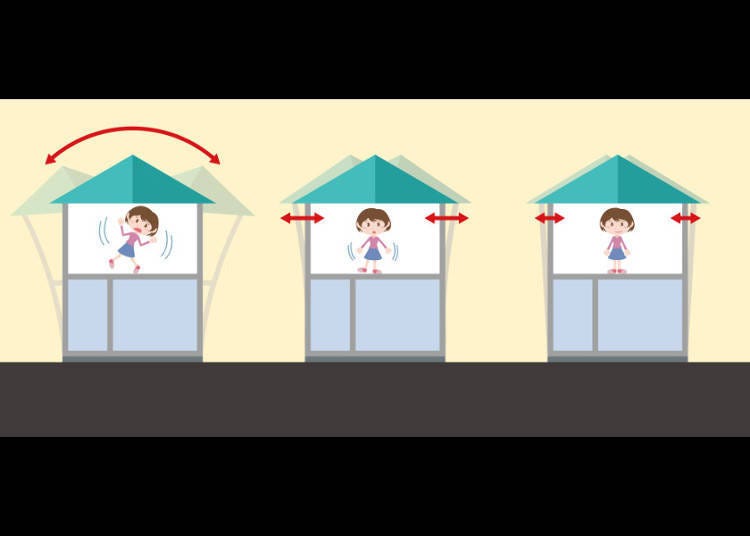
Earthquakes
Earthquakes can happen fairly frequently in Japan, ranging from small shakes to large deadly earthquakes. Japan measures earthquakes with both Shindo Scale and the Richter scale to express the strength of the earthquake. Each step of the Shindo Scale specifically tells you how it will physically feel to a person experiencing the earthquake.
About the Shindo Scale
Shindo 1: Hardly noticeable
Shindo 2: Slight shaking.
Shindo 3: Can be felt, objects rattle.
Shindo 4: Strong shaking, unsecured objects can fall.
Shindo 5 lower: Most unstable objects fall, furniture moves. Very strong shaking.
Shindo 5 upper: Heavy furniture starts to fall over. Unreinforced walls can collapse.
Shindo 6 lower: Most furniture falls. Damage to less earthquake-resistant houses possible.
Shindo 6 upper: Movement is only possible by crawling. Furniture is displaced. Houses may collapse.
Shindo 7 and up: Movement is impossible. Heavy damage to buildings.
Many hotels and other accommodations will have at least a flashlight, if not a small earthquake survival kit. In case evacuation measures are taken, find out where the nearest evacuation spots are so that you are able to receive first aid and earthquake information.
Japan Meteorological Agency: Earthquake Information
http://www.jma.go.jp/en/quake/
What to do in case of earthquake
Unlike typhoons and other weather events, earthquakes can only be predicted mere seconds before they hit. For bigger quakes, a warning may occur, via radio, on the TV screen, or a mobile phone alarm.
When you hear or see this alarm, or experience shaking, the first important rule is not to panic. If you are in an area with Japanese around, look at how they are reacting and do similarly. Structures in Japan are made to withstand earthquakes, and if those around you don't seem to be paying much attention then it probably isn't something to be worrying about. Many quakes subside within a minute or so.
・However, if shaking does becomes increasingly violent, dropping to the floor and covering your head comes next.
・Try to seek shelter underneath a table or similar protective shelter, but don’t go out of your way to reach it, as you might be knocked over by a jolt, or hit by a falling object.
・Additionally, stay away from windows, bookshelves, or similar things that might break or topple. As already mentioned, modern buildings are designed to withstand even strong earthquakes, able to absorb the jolting and shaking without suffering major damage.
・Even if a building might ultimately collapse during an earthquake, the safest thing to do is not to run outside but instead stay put under a table – it is one of the most reliable shelters during quakes.
Tap here for more information on earthquakes in Japan.
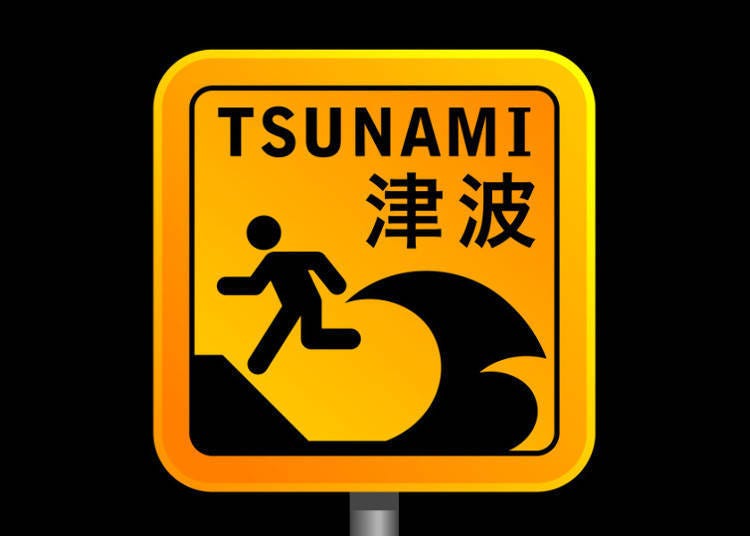
Tsunami
Tsunami are tidal waves formed due to seismic activity like earthquakes. A large tsunami will cause flooding and damage, so it is best to keep an eye on tsunami warnings and advisories after an earthquake or during a typhoon, especially if you are in an area that is close to the sea.
As with typhoon warnings, tsunami warnings can be viewed in English at the Japan Meteorological Agency website, Tsunami Warnings/Advisories page.
Japan Meteorological Agency: Tsunami Information
http://www.jma.go.jp/en/tsunami/
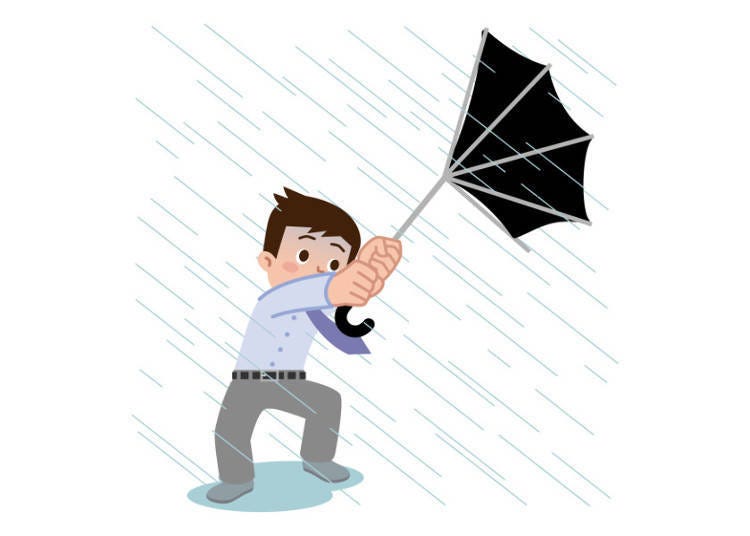
Typhoons
Typhoons are large tropical storms (much like hurricanes) that typically occur between August and October every year. They usually bring strong winds, rain, and high tides.
Extremely heavy rain and wind will affect the area around the center of a typhoon. While outlying areas can seem to be relatively unaffected, storm surge can still be experienced around coastal regions.
Typhoons often also cause other disasters like flooding and landslides. Stay informed with weather watches on the TV or radio, or the Japan Meteorological Agency which provides typhoon information in English.
Preparing for a typhoon
As a precaution, move and secure any outdoor objects which may become a hazard, close any window shutters if available, and watch for flooding in basement floors.
What to do in case a typhoon hits your area
・Keep an eye on the local weather reports. If special alerts are issued, there is increased risk of flooding or landslide.
・If you are concerned about risk for your immediate area, speak with your hotel staff.
・Stay indoors.
・Stay away from downed power lines.
・Stay away from flooded streets.
Japan Meteorological Agency: Tropical Cyclone Information
http://www.jma.go.jp/en/typh/
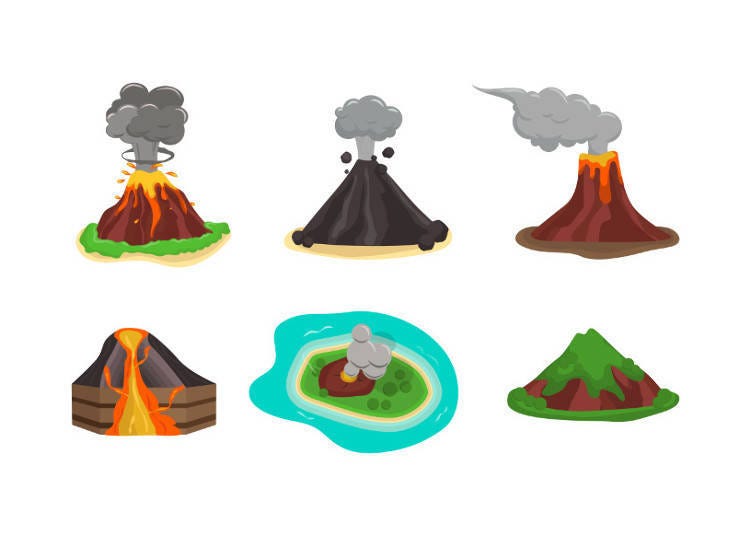
Volcanic Activity
Japan is home to several active volcanoes, many of which are around popular tourist spots. Warnings are usually given when the area is unsafe and people are informed not to approach the crater or volcano. Volcano warnings can be checked on the Japan Meteorological Agency website, Volcanic Warning page.
Japan Meteorological Agency: Volcano Information
http://www.jma.go.jp/en/volcano/
4. Useful Apps

You can find smartphone apps in a number of languages to assist you in case of emergency.
Safety tips
Developed by the Japan Tourism Agency, Safety tips is a push-enabled app for alerting you with early warnings of earthquakes and tsunamis.
Yurekuru Call
Another popular push-enabled app for alerting you with early warnings of earthquakes and tsunamis.
5. Useful Websites
■JNTO (Japan National Tourism Organization)
https://www.japan.travel/en/news/JapanSafeTravel/
■NHK WORLD (Japan's public broadcaster)
https://www3.nhk.or.jp/nhkworld/
■Train Service Status Information (JR)
・East Japan Rail Company
https://www.jreast.co.jp/e/
・Central Japan Rail Company
https://global.jr-central.co.jp/en/
・West Japan Rail Company
https://www.westjr.co.jp/global/en/
■Airports
・Kansai International Airport (KIX) (Osaka)
https://www.kansai-airport.or.jp/en/
・Chubu Centrair International Airport (NGO) (Nagoya)
https://www.centrair.jp/en/
・Fukuoka Airport (FUK) (Fukuoka)
https://www.fukuoka-airport.jp/english/
・Tokyo International Airport/Haneda (HND)
http://www.haneda-airport.jp/inter/en/flight/
・Hiroshima Airport (HIJ)
http://www.hij.airport.jp/english/
・Narita International Airport (NRT)
https://www.narita-airport.jp/
・New Chitose Airport (CTS)
http://www.new-chitose-airport.jp/en/
・Kumamoto Airport (KMJ)
https://www.kmj-ab.co.jp/eng/
・Sendai International Airport (SDJ)
https://www.sendai-airport.co.jp/en/
・Nagasaki Airport (NGS)
https://nagasaki-airport.jp/en/
・Naha Airport (OKA)
https://www.naha-airport.co.jp/en/
・Kagoshima Airport (KOJ)
https://www.koj-ab.co.jp/flightdata/schedule/index/
*Prices and options mentioned are subject to change.
*Unless stated otherwise, all prices include tax.
Popular Tours & Activitiess
Recommended places for you
-

Kambei Sannomiyahonten
Yakiniku
Kobe, Sannomiya, Kitano
-
Goods

Yoshida Gennojo-Roho Kyoto Buddhist Altars
Gift Shops
Nijo Castle, Kyoto Imperial Palace
-

ISHIDAYA Hanare
Yakiniku
Kobe, Sannomiya, Kitano
-

Jukuseiniku-to Namamottsuarera Nikubaru Italian Nikutaria Sannomiya
Izakaya
Kobe, Sannomiya, Kitano
-
Appealing

Rukku and Uohei
Izakaya
Sapporo / Chitose
-

Kanzenkoshitsuyakinikutabehodai Gyugyu Paradise Sannomiya
Yakiniku
Kobe, Sannomiya, Kitano
-

Jujutsu Kaisen Takes Over JR East With a Wrapped Shinkansen This Winter
by: Guest Contributor
-

Strawberries, Style, and Tokyo’s Coolest Neighborhood: Winter Afternoon Tea in Kichijoji
by: Guest Contributor
-
Ad

Complete Guide to Ueno's National Museum of Nature and Science, the Perfect Place to Visit on Rainy Days or With Children
-
Ad

Discover the "Miraculous Forest" in the Heart of Tokyo: The Institute for Nature Study (9 Minutes from JR Meguro Station)
-
Ad

(Opening in Jan 2026) 'THE SUMO LIVE RESTAURANT HIRAKUZA GINZA TOKYO!' 5 Exciting Ways to Experience the World of Sumo!
-

Japan’s Shinkansen Is About to Change Travel in an Unexpected Way
by: Guest Contributor
-

Tokyo's Must-See Events in April 2019
-

What to Pack for Japan: 8 Essential Things for a Hassle-Free Trip
-

How Bread Came to Japan: A Brief History of Japanese Bread
-

Popular Food at Universal Studios Japan
by: WESTPLAN
-

Sightseeing Highlights: Experience the Appeal of Kyoto Geisha Culture
-

Get it at Tokyu Hands! The Top 10 Beauty Products Recommended by a Beauty Concierge
- #best sushi japan
- #what to do in odaiba
- #what to bring to japan
- #new years in tokyo
- #best ramen japan
- #what to buy in ameyoko
- #japanese nail trends
- #things to do japan
- #onsen tattoo friendly tokyo
- #daiso
- #best coffee japan
- #best japanese soft drinks
- #best yakiniku japan
- #japanese fashion culture
- #japanese convenience store snacks












